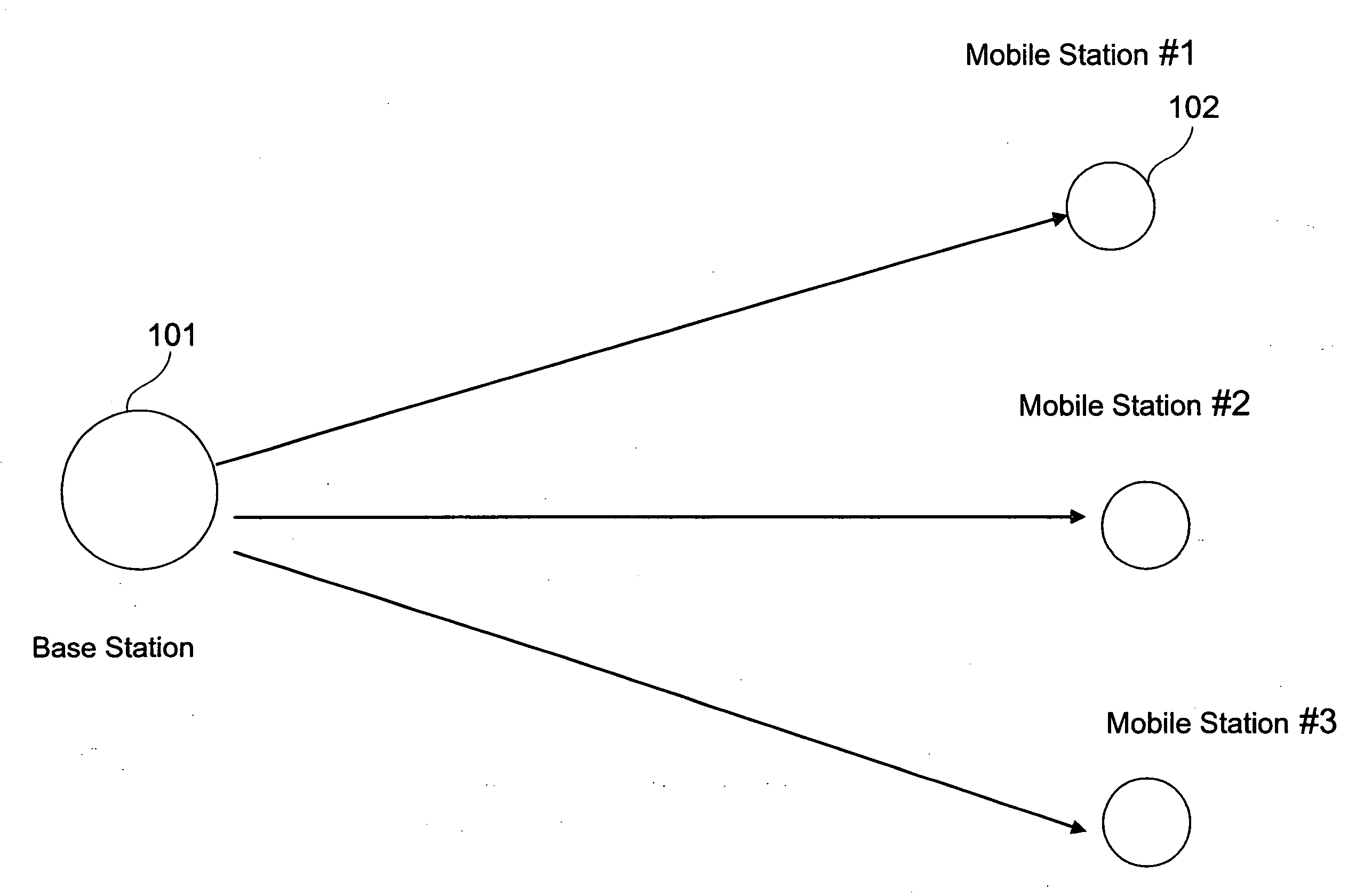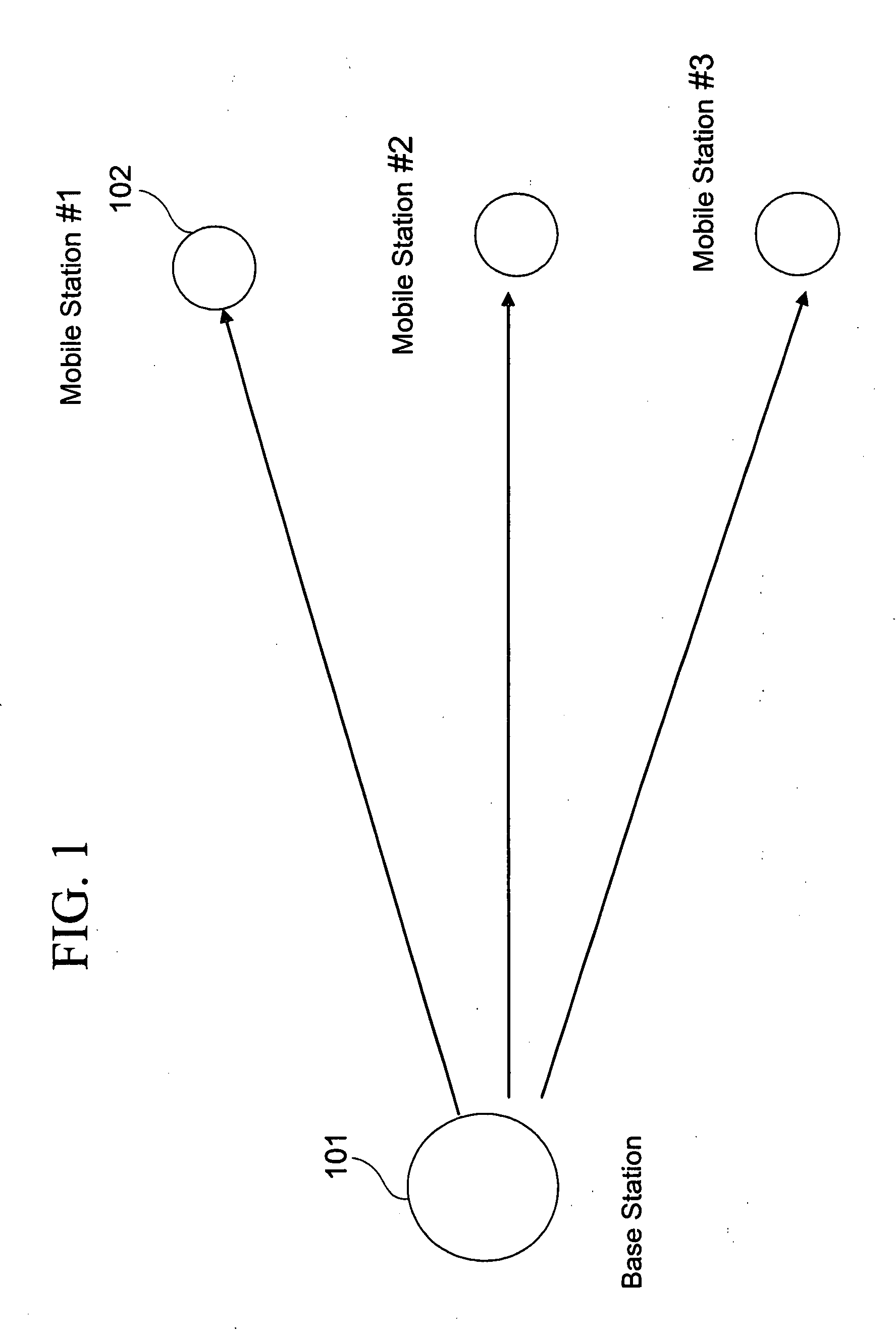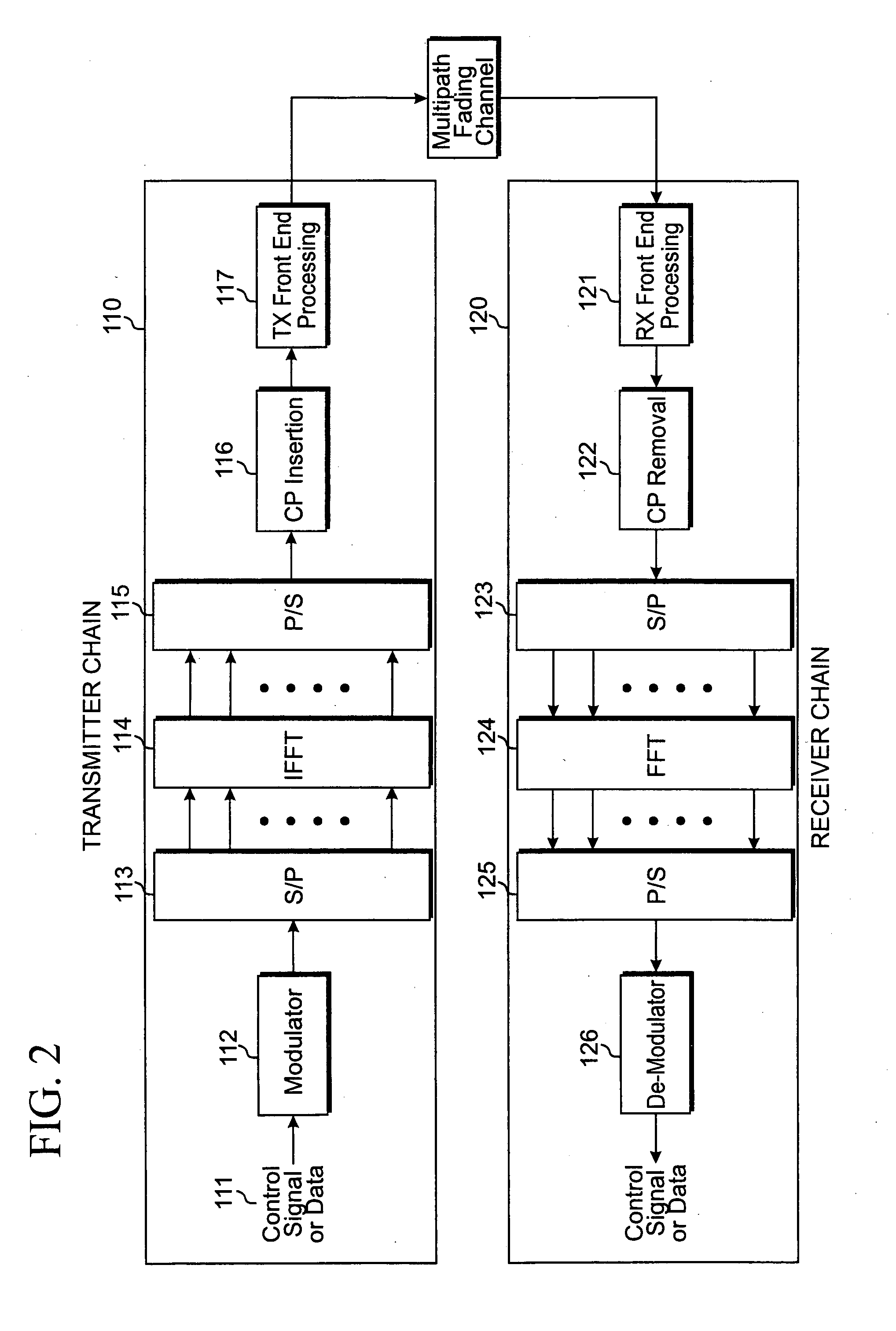Spatial interleaver for MIMO wireless communication systems
a wireless communication system and spatial interleaver technology, applied in the field of transmitting data in a mimo wireless communication system, can solve problems such as performance loss
- Summary
- Abstract
- Description
- Claims
- Application Information
AI Technical Summary
Benefits of technology
Problems solved by technology
Method used
Image
Examples
first embodiment
[0058]FIG. 8 illustrates a block diagram of a multiple-codeword MIMO-OFDM system according to the principles of the present invention. The spatial interleaving scheme shown in FIG. 8 is denoted as Scheme-A. The basic block diagram on coding, modulation, and channel bit interleaver schemes is the same as the PARC scheme as shown in FIG. 5. A symbol-level spatial channel interleaver 205 is, however, proposed to be coupled between antenna precoding unit 206 and modulation unit 204. As an example in FIG. 8, a two-codeword MIMO system with two transmission antennas is presented. The spatial channel interleaver allows modulation symbols S1 (from codeword 1) and S2 (from codeword 2) to be transmitted on two spatial layer when rank-2 transmission is active, thus each codeword (codeword 1 or codeword 2) would experience two layers of spatial channel, thereby the proposed scheme would increases spatial diversity. In addition, the proposed scheme provides performance robustness in the case of ...
second embodiment
[0060]FIG. 10 illustrates another example of symbol-level spatial interleaver according to the principles of the present invention. In this embodiment, the modulated symbols from S1 (from codeword 1) and S2 (from codeword 2) are multiplexed by multiplexing unit (MUX) 221 to form a single symbol stream X[i], i=1,2, . . . N. The multiplexed stream X[i], i=1,2, . . . N, is further interleaved by block channel symbol interleaver 222. In this embodiment, because the size of block channel symbol interleaver 222 is 3×3, thus N=9. As shown in FIG. 10, the multiplexed stream X[i] with the original sequence order 1, 2, 3, . . . N is re-arranged by block channel symbol interleaver 222. Block channel symbol interleaver 222 reads the multiplexed stream X[i] and stores the symbols in a buffer in a column-wise manner. Subsequently, the symbols are read out from block channel symbol interleaver 222 in a row-wise manner. The interleaved stream has a new sequence order of 1, 4, 7, 8, 5, 2, 9, 6, 3. A...
third embodiment
[0061]FIG. 11 illustrates a third type of symbol-level spatial interleaver according to the principles of the present invention. This third type of symbol-level spatial interleaver is denoted as Symbol-level Spatial Interleaver-Z, and is even more random. In this embodiment, block channel symbol interleaver 222 in FIG. 10 is replaced by random function interleaver 232. This random function is used to generate a random index that can be use to shuffle the stream X[i]. That is, the stream Y[i], i=1, 2, . . . N, is a shuffled version of X[i], i=1, 2, . . . N in a random manner.
PUM
 Login to View More
Login to View More Abstract
Description
Claims
Application Information
 Login to View More
Login to View More - R&D
- Intellectual Property
- Life Sciences
- Materials
- Tech Scout
- Unparalleled Data Quality
- Higher Quality Content
- 60% Fewer Hallucinations
Browse by: Latest US Patents, China's latest patents, Technical Efficacy Thesaurus, Application Domain, Technology Topic, Popular Technical Reports.
© 2025 PatSnap. All rights reserved.Legal|Privacy policy|Modern Slavery Act Transparency Statement|Sitemap|About US| Contact US: help@patsnap.com



